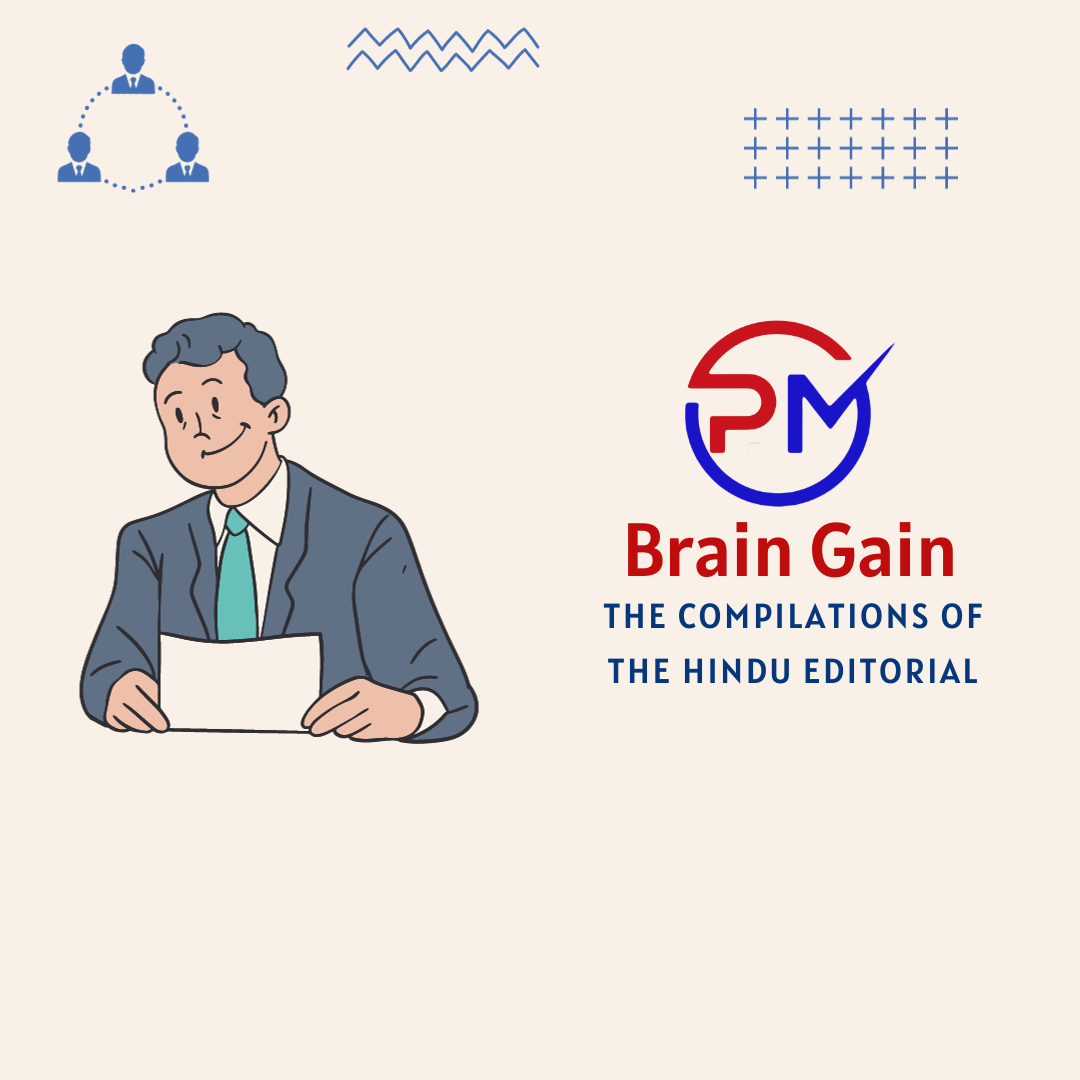Editorial 1 : Giving the urban Indian a better life
Context
- The theme of World Cities Day (October 31) this year was “Financing Sustainable Urban Future for All.” Finances must be channelled in the right direction such that urban futures which are being cut short on account of flawed urbanisation are checked, and, in turn, cities made liveable and safe. It is atrocious that air pollution is taking away over 10% of our life expectancy.
Pollution and India
- A report released by The Energy Policy Institute at Chicago (EPIC) shows that out of the 50 most polluted cities in the world, 39 are in India.
- Pollution directly affects the health of people, and an average Indian loses 5.3 years of his life expectancy due to this; for the residents of Delhi, it is 11.9 years.
- Pollution results in burning eyes, irritation of the nose and throat, coughing, choked breath, and asthma apart from causing cardiovascular diseases.
- Bad air is not limited to the Indo-Gangetic plains anymore where the argument of inversion of temperature and slowing down of wind speeds was considered as a factor for poor air quality.
- The situation is getting to be bad even in India’s coastal cities.
The expansion of ‘grey’ infrastructure
- The overall development strategy of urban development in India — apart from proper execution of enforcement by agencies — needs a paradigm shift.
- The need now is to turn to sustainable and “ecological urbanization”.
- The trajectory of urban development, where the focus is more on real estate development, a widening of roads, allowing large fuel guzzling vehicles on them, in turn squeezing the space meant for pedestrians, and redevelopment are the major reasons for increased pollution in Indian cities.
- Road dust, concrete batching, polluting industrial units and their extension in the cities, and vehicular emissions are key factors too.
- It is estimated that motorised transport alone is the cause for 60% of urban pollution.
- The green lungs of the cities, water bodies, urban forests, and green cover on urban commons, and urban agriculture have all reported shrinkage, even as “grey” infrastructure has seen rapid expansion. Hence, the priorities need to be set right.
- City residents, unfortunately, have hardly any participatory role and are forced to become passive bystanders in the urbanisation process.
Focus on public transport
- There is a compelling need to have an alternative strategy of city building, where the focus is on more public transport.
- There needs to be good public transport, with investment in buses for towns and cities.
- It is estimated that nearly 10 lakh buses would need to be added to the existing bus fleet in cities to meet the demands of urban mobility.
- Strong steps need to be taken to control private motorised vehicular movement in the cities.
- A congestion tax being levied on private car owners driving during peak hours can be thought of.
- Likewise, an odd number-even number plate formula can be another important intervention.
- Delhi has a Graded Response Action Plan, or GRAP (a set of anti-air pollution measures), the moment air quality deteriorates.
- There should be zero acceptance of industrial pollution and real-time monitoring must become a reality.
- There must be street supervision by residents instead of waiting for the statutory bodies to react, which urban local bodies can ensure.
- Urban commons (ponds, water bodies, urban forests, parks, playgrounds) are another major area that should not at all be allowed to be taken over by either public or private bodies for private gains.
- Redevelopment across the country has resulted in pollution. A city’s ecology is one of the first casualties and there is hardly any meaningful afforestation within a city. Planting trees 50 kilometres away from the city does not help in curtailing pollution in the city.
Strengthen governance
- So-called solutions such as smog towers or even watering roads are just cosmetic.
- People’s empowerment through the city’s governance architecture is a firm step forward.
- Pollution guides and standard operating procedures for various line departments and agencies must not only be made readily available to the people but should also become a part of the way of life in the city.
- There must be a strong GRAP-like standard operating procedure. Likewise, the medical fraternity must support the putting out of a public health advisory.
Conclusion
- We cannot afford to let our lives be shortened by reasons such as air pollution. The poor and the marginalised are the least contributors to pollution but are the segment who are most exposed to it and who pay a heavy price. They need a better life.
Editorial 2 : The Zika genome and insights into the era of emerging outbreaks
Introduction
- The dengue virus and its equally infamous cousin, the Zika virus, together infect up to around 400 million people every year. The Zika virus and genomic studies of it have opened fascinating windows into our knowledge of the infectious disease and its relevance in the context of emerging outbreaks.
The Zika virus
- The Zika virus is a mosquito-borne flavivirus.
- Most infections in humans are asymptomatic or with mild symptoms, including fever, rash, and joint pain.
- The outbreak was characterised by an alarming increase in the number of microcephaly cases in newborns, prompting the World Health Organisation to declare it a public health emergency of international concern in early 2016.
- From Africa, the Zika virus has spread to Asia, Pacific islands, to the Americas, and beyond. The disease has of late been in the headlines with multiple outbreaks in the last few years in multiple Indian states, including, more recently, Kerala and Karnataka.
- A significant number of insights have come from the Zika virus’s genome.
- Researchers sequenced the complete genome first in 2007. It has more than 10,000 bases of single-stranded RNA.
- The genome is also peculiar: it encodes for a large polyprotein, which is further cleaved into capsid, membrane precursor (prM), envelope, and seven non-structural proteins.
- The diagnosis of a Zika virus infection is mostly through genetic testing.
- An antibody-based test would be complicated because antibodies produced by the infection can cross-react with those of the dengue (DENV), yellow fever, and West Nile viruses.
Epidemiology and surveillance
- The Zika virus has an RNA genome, and thus a very high potential to accumulate mutations. The tools, techniques, and modalities we’ve developed to track the evolution, genetic epidemiology, and molecular underpinnings of transmission and pathogenesis could be extended to Zika virus outbreaks as well.
- Genomic studies have suggested that the Zika virus has two lineages: African and Asian.
Zika and microcephaly
- The small heads of children born to infected mothers has been one of the more alarming complications of a Zika virus infection.
- Earlier, based on studies with mice, researchers had suggested that a mutation in one of the precursor membrane proteins, called prM, of the Zika virus was associated with microcephaly.
- However, while the large outbreak in South America was caused by lineages of the virus with the specific mutation, only a subset of the relevant pregnancies resulted in microcephaly.
- The Zika-microcephaly hypothesis also suffered when researchers recorded microcephaly in Thailand following infections of the Asian lineage of the Zika virus that lacked the mutation.
- Foetal Zika virus infections were associated with heavy viral loads during pregnancy, and the viral load strongly influenced foetal growth.
- Taken together, the findings underscore the importance of the viral load and DENV infections for the occurrence of microcephaly.
Making it attractive
- Zika virus and DENV infections are interesting in their own right.
- In a recent study in Cell that infections of two viruses in primates encourage specific microbes to grow on the skin by suppressing an antimicrobial peptide, RELM, on the skin.
- These microbes produce acetophenones, which are volatile molecules that could provide a chemical cue to mosquitoes, attracting them towards the individual and supporting forward transmission of the viruses.
- The researchers also reported that administering isotretinoin could upregulate RELM and reverse this phenomenon.
Conclusion
- Zika virus and DENV interactions have also been an interesting area of research.
- A significant body of evidence suggests that a Zika virus infection can significantly increase the risk for severe dengue.
- As climate change helps drive the spread of vector borne diseases, and global warming brings environmental conditions that favour them to new places, our genomic technologies and such deep insights into the molecular pathogenesis of these viruses will be an important guiding light.


